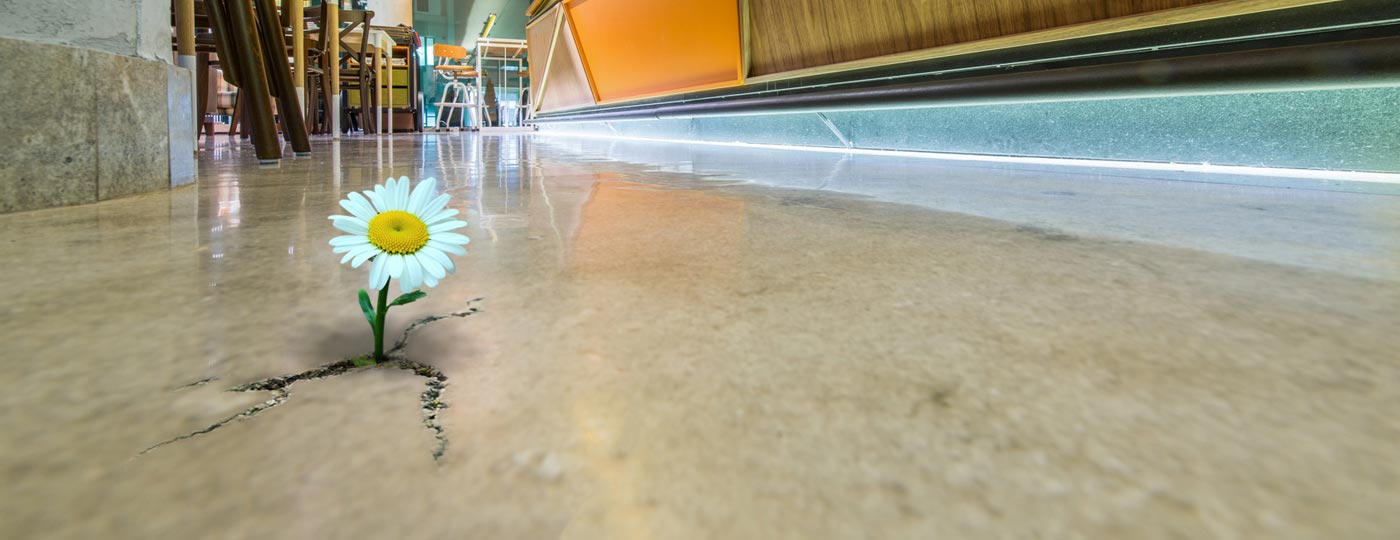While you cannot entirely prevent concrete from cracking, there are certainly strategies to minimise it. Your best defence against concrete cracking is to try to control where the cracks will more likely occur. Prevention starts with creating a predetermined location of joints on the concrete floor.
A concrete specialist can apply “preventive medicine” and precautionary measures on concrete floors to delay the onset of cracks.
There are several ways a concrete specialist can prevent concrete from cracking too soon:
Considering Temperature Changes
Expert concrete installers know what causes concrete to crack, and therefore during installation, they take into consideration the degree of restraint to which the concrete will be subjected.
Adding Joints
Joints are easy to maintain, and the placement and depth of each are critical for effective performance to prevent concrete from cracking:
- Isolation Joints or expansion joints – Placed wherever you need complete separation between the floor and adjoining concrete. This allows them to move independently without damage.
- Construction Joints – Placed on a slab when concluding concrete operations for the day.
- Control Joints – (also called contraction joints) – Intended to create straight lines of weakness in the concrete where the cracks will occur along. Control joints are created to a depth of one fourth the slab thickness with a maximum joint spacing of 24 to 36 times the thickness of the slab.
- Saw Joints – Control joints that are sawed-in as straight as possible. These are clean lines at about 1/4 the thickness of the slab. Commence sawing as soon as the concrete is strong enough to resist tearing or damage to the saw blade, within the first 6 to 18 hours. Do not wait longer than 24 hours.
- Sealing Joints — While it is not always necessary to seal joints, it can help protect the joints from the infiltration of surface water and incompressible materials into the joint. Surface water infiltration can lead to subgrade failure and incompressible materials in the joint may contribute to spalling. Delay sealant application to ensure the shrinkage of the concrete is complete. Sealant materials should bond to the concrete, be impermeable, and be able to handle expansion and contraction.
Avoid Excess Water
Excess water in the concrete mix increases the probability of cracking. To avoid this, do not add extra water to the mix.
Excellent Subgrade Preparation
Excellent subgrade preparation is necessary to provide a good base for your concrete. The subgrade should be smooth. A smooth subgrade preparation will reduce any restraint as the concrete shrinks, therefore, reducing the chances of it cracking.
Prevent Concrete From Cracking By Proper Curing
Curing is the act of helping maintain concrete moisture by preventing its rapid loss. If the concrete loses moisture from its surface too quickly, it will shrink, causing cracking.
If different parts of your floor cure at different rates due to temperature differences or sun exposure, you are set to have an uneven floor that is bound to crack.
Therefore, proper curing of the concrete is crucial to help to prevent early age cracking. It improves the overall strength and integrity of the concrete. This is the most critical step. Proper curing will make your concrete floor more durable.
The usual duration for moist curing is seven days. However this really varies depending on the job, season, environment and the type of floor you are preparing.
As you may have guessed, low quality curing can lead to more severe cracking. It can also require repeated crack repair, which means higher costs in the long run.
How Can We Help You?
While we don’t lay concrete ourselves, we are experts in grinding and polishing it.
We can help repair cracks and we can also install very thin terrazzo over your worn concrete.
To find out our complete range of products and solutions for your concrete floor project, why not contact us today?
